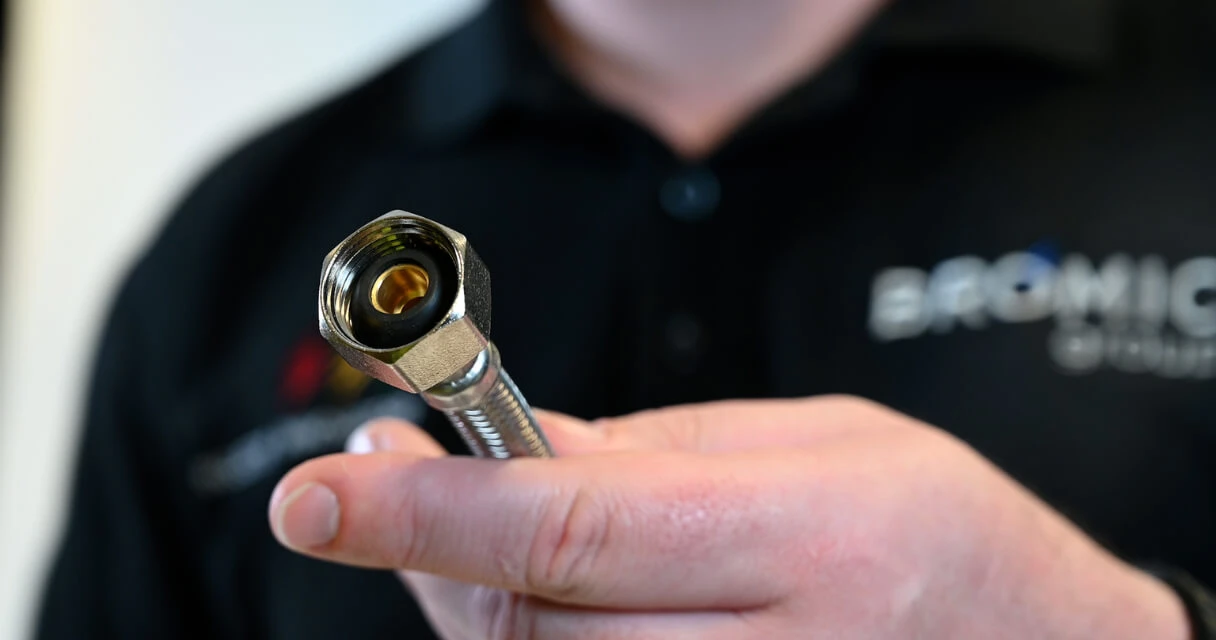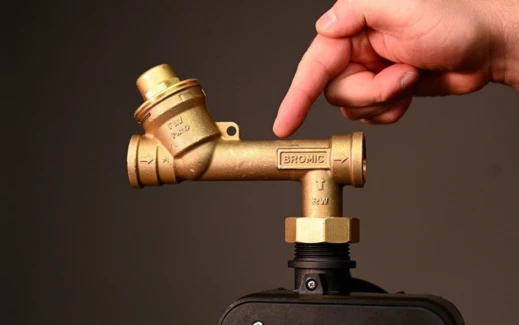
Favourites
Sign in to your account
By adding to Favourites, you can…
- Save products or resource documents you view regularly
- Save time with quick access to frequently viewed items
Please sign in or create an account to add to your Favourites.
To choose the right air admittance valve, you’ll need to know the fixture unit of the pipe and the airflow capacity required. Read more
| Properties | Air Admittance Valve 110mm (SKU: 1210702) | Air Admittance Valve with Adaptor for 32-40-50mm (SKU: 1210701) |
|---|---|---|
| Recommended Application | Discharge stacks up to 45 metres or 10 storeys high | 32mm and 40mm for use as a connection to waste pipes to prevent water loss from trap seals. 50mm is for use on branch discharge pipes |
| Connection | 110mm push-fit connection 82mm solvent cement connection | 32mm, 40mm and 50mm solvent cement connection |
| Airflow Capacity | 108.32l/s | 10.1l/s |
| Maximum Unit Loading | Pipes – 19,799 fixture units Stacks – 1230 fixture units | Pipes – 172 fixture units Stacks – 10 fixture units |
| Temperature Range | -20°C to +60°C | -20°C to +60°C |
Both ball valves and butterfly valves are valves that are used to control the flow of water or gas in a pipe system. Internally, butterfly valves consist of a thin disk and ball valves consist of a sphere-like disc that rotates as the handle is turned.
Whilst butterfly valves are usually recommended for use with larger pipe diameters, ball valves provide a tighter seal and are hence suitable for high-temperature and pressure services. Bromic supplies a wide range of ball valves with different thread connections and lever types for gas and water applications.
Please note: Butterfly valves should not be confused with butterfly handles (also known as T handles).
The colour of the handles on Bromic ball valves are used to distinguish their usage between gas and water.
Valves with a yellow handle are gas valves and are AGA-approved for use with Natural Gas and LPG.
Valves with a green handle are water valves and are WaterMark-approved for use with potable water. Almost all of Bromic’s green handle valves are also AGA-approved for use with gas, with exceptions such as 1210437.
Refer to product information to review if a valve is compatible with gas and/or water pipelines.
To select the right test plug size you’ll need to know the diameter and back pressure of the pipe. The back pressure can be calculated by determining the height of the water that accumulates from the centerline of the pipe.
Select a test plug based on the compatible pipe size diameter. Ensure that the back pressure of the pipe is less than the test plug’s maximum back pressure (psi).
| SKU | Internal Pipe Size | Compatible Pipe Size (Internal Minimum) | Compatible Pipe Size (External Diameter) | Minimum Depth (inserted in pipe) | Waterway Diameter | Max. Back Pressure |
|---|---|---|---|---|---|---|
| 8688000 | 40mm (1.5″) | 38mm | 53mm | 31mm | 15mm | 30psi |
| 8688001 | 50mm (2″) | 50mm | 62mm | 32.7mm | 15mm | 30psi |
| 8688002 | 65mm (2.5″) | 62mm | 80mm | 33.2mm | 15mm | 30psi |
| 8688003 | 75mm (3″) | 73mm | 92mm | 34mm | 15mm | 20psi |
| 8688004 | 100mm (4″) | 94mm | 110mm | 37.5mm | 15mm | 10psi |
| 8688005 | 150mm (6″) | 147mm | 165mm | 39.7mm | 15mm | 10psi |
Both pneumatic and mechanical test plugs can be used to test leaks and block off sections of pipelines. The benefit of pneumatic plugs is that they can be used for multiple purposes such as bypassing effluent that is running through a live pipeline. Mechanical plugs such as Bromic Test Plugs are usually recommended for long-term installations as they can fit tightly and create a seal.
Unlike analogue manometers, digital manometers contain a pressure transducer that deflects under pressure. Digital manometers are more accurate than their analogue counterpart and are also easy to read.
The Bromic Manometer Kit provides additional features including:
- Record function
- Data hold
- Large dual LCD with backlight
- Max/Min/Avg value
- Low battery indication
- Auto power off
- 11 different units of measure
A digital manometer is used to detect gas leaks and faults in air conditioning systems. It can also be used for monitoring and maintaining HVAC systems and gas pressure in piping and compressor systems. Read more
Empty disposable gas cylinders can be dropped off at your local hazardous waste facility which you can find on Recycling Near You (we recommend contacting to see if they accept your type of gas cylinder). Read our full gas cylinder disposable guide here.
The Oxyset (1811167-2) can be used to braze copper pipes up to 1.5″ (38mm) in diameter. Whilst oxy-acetylene produces a higher flame temperature, oxy-map produces a high flame temperature suitable for many brazing applications. Due to its compact size and weight, the Oxyset is an ideal companion for plumbers, gas-fitters and HVAC technicians.
As the highest-pressure disposable cylinder in the market, Bromic 1L Oxygen Disposable Cylinder provides more gas in a compact cylinder. When used with the Oxyset tip #1 and Map//Pro gas, the Bromic 1L Oxygen Disposable Cylinder allows roughly 45 minutes of run time. Actual consumption rates may differ depending on the user and settings.
| Nozzle Supplied with Oxyset 1811167-2 | Oxygen (1L cylinder) | Fuel Gas (400g cylinder) |
|---|---|---|
| #1 | 160 g/h (45 mins) | 35 g/h (11.0 h) |
| #2 | 260 g/h (30 mins) | 70 g/h (5.5 h) |
| #3 | 290 g/h (25 mins) | 105 g/h (3.5 h) |
| #4 | 380 g/h (20 mins) | 135 g/h (2.5 h) |
| #5 | 535 g/h (15 mins) | 200 g/h (2.0 h) |
The OXYSET (1811167-2) is fuelled by a disposable oxygen cylinder (T-PED approval number 0036) and
a disposable MAP//Pro cylinder (complying with DOT39). We recommend using Bromic oxygen
cylinders (P/N 1811320) and BernzOmatic MAP//Pro cylinders (P/N 1811120).

STILL HAVE QUESTIONS?
If you have searched our website, document library & FAQs and haven’t found the information you need, please contact us to resolve your query. This will allow us to continually improve the data we share here and elsewhere on our website.



